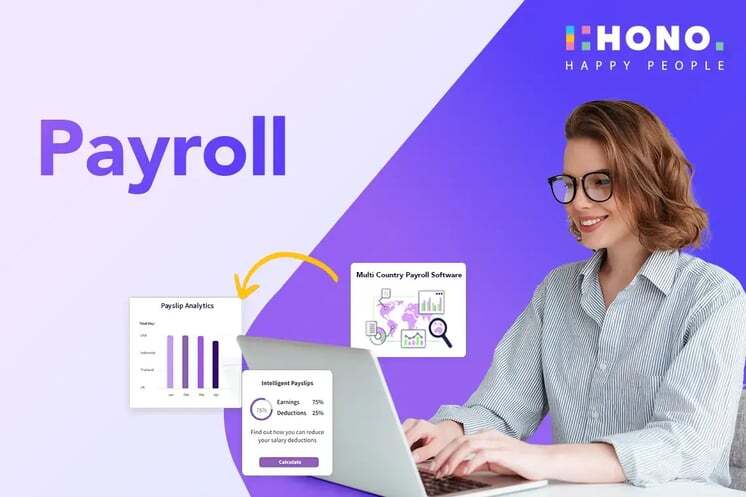What is HRM (Human Resource Management)?
Human resource management also known as HRM refers to strategic planning and workforce management for organizations. The approach focuses on recruitment, training, performance management, building employee relationships, calculation remuneration and managing workplace policies at the same time.
Why is HR management (HRM) important?
HRM is crucial for building a productive, highly engaged and a compliant organizational workforce. Mentioned below are the reasons why it can be considered as an imperative aspect
A smart HRM ensures that the businesses attract, hire and retain the right people fostering long term success and achieving organizational goals at the same time.
Organizations also focus on the HRMs which can help their employees to grow. It can either be through training, performance evaluations or running career development programs.
- Workplace Culture & Engagement
Focusing right things at the right time is what an HRMS platform is meant for, and such HRMS promotes positive work culture which boost employee morale.
It ensures adherence to laws and regulations, prevents any sort of legal breach and safeguard employee rights alongside.
An aligned HRMS help businesses to strategically manage human capital, making in sync with long-term goals and ensure sustainability.
8 Key Characteristics of Human Resource Management (HRM)
In multiple HRMS options available across the industry, it is important to know which suits your business goals. Here are the 9 key characteristics or features of HRM
1. People Oriented
A human resource management system is always designed to keep employee's wellbeing in mind. It also ensures productivity, employee satisfaction and focuses on arranging employee development programs that create an effective workforce. Being dedicated to employee- employer relationship, a smart HRM is all about creating a better workplace.
2. Strategically Aligned with Business Goals
The HRM should make a sync in between talent acquisition, performance management, workforce planning and organization’s long business goals. This makes the regular HR operations completely in sync with organization’s long term business goals, creating a bridge between employees- employers and company’s future goals.
3. Emphasis on Continuous Development
By initiating training programs, module-based understanding, career progression plans etc., an HRM promotes ongoing skill upgradation and employee growth simultaneously. This helps in making the employees well versed with the organization’s policies, work and product/service information. The training programs are imperative to upgrading knowledge and learning more about the development within the organization.
4. Performance and Result Driven
HRM brings in clear business goals, monitors employee’s contribution at work, provides rewards and recognitions and acts as a bridge between organizations and employee’s success. A features-oriented HRM is great for driving performance and delivering proven results, may it be in terms of organization’s overall growth or fostering employee growth which in turn will benefit the organization in the long run.
5. Holistic and Inclusive Scope
The right HRM solution covers every facet of the employment such as remuneration, workplace environment and ethics, maintaining employee relations and ensuring a holistic positive approach. This aspect is interestingly very imperative as it provides a holistic view of the entire employee lifecycle and takes care of organization’s regular HR needs.
6. Legal and Ethical Foundation
In terms of legal implications, HRMS ensures compliance with labour laws, maintaining workplace regulations and adhering to ethical standards. This also includes making sure that every country’s tax laws are abided and the HR platform supports geography based legal requirements, further helping organizations to scale globally.
7. Adaptable to Change and Innovation
Every organization make updates and upgrades, wherein you need a HR system that can help you accommodate changes and make it work seamlessly even if you scale frequently. The HRMS should be adaptive to industry changes, trends, technology upgrades, market fluctuations and let the workforce stay future ready.
8. Relationship and Communication Management
Building a strong connection and spirit between the working staff and the organization is extremely essential as it provides employees a fair will to stay connected with the brand they are working with. It builds a strong employee –employer relationship through easy and transparent communication, effective feedback systems and smart engagement programs.
Read here: What Is HRMS Software? Everything You Need to Know in 2025
Conclusion
Having a smart and effective HRM solution is a necessity for growing organizations. No matter if you are a startup, in expanding stage or even an enterprise looking to scale further, you always need a smart HRM platform to manage regular HR operations and look after employee wellbeing in the longer run.
Still unsure which HRM to choose? Get started with HONO, an AI-powered HRMS platform, equipped with multi-country payroll capabilities and multi-lingual options to let you have a global team and scale conveniently.
Drop a line and we will help you understand the best for your organization!
<<Request A Demo>>










